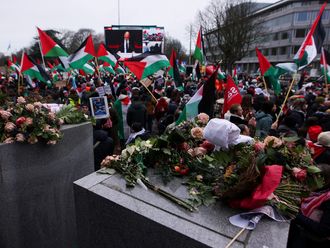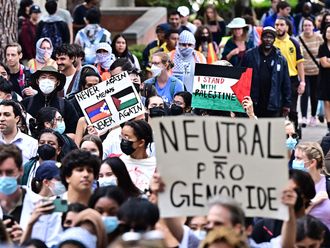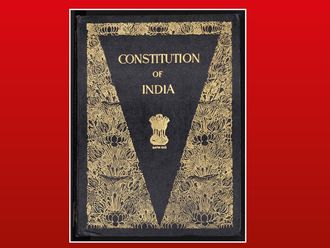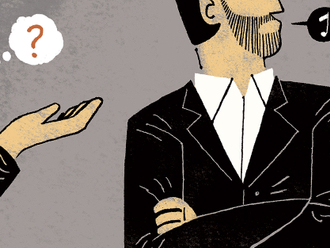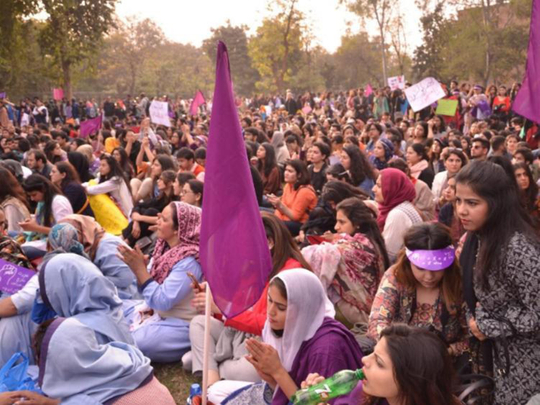
On International Women’s Day in Pakistan last month, thousands of exuberant young feminists staged their second Aurat (women’s) March. Intended to build on the success of a well-received march last year, it was designed to be inclusive, peaceful and raucously joyful. It had women from all walks of life, some in Western clothes, others in full veils, headscarves and burqas. Women from cities and villages. Female health workers and teachers. Trans women and male allies.
Then came an ugly backlash that still simmers — a sign that the feminists’ goal of breaking the hold of patriarchy is still a long way away.
Recalling the joys of the 2018 march, the activists and volunteers had gone to low-income neighbourhoods and rallied women there. They bused women from rural villages. They printed flyers with artwork by young female artists, and drew posters that expressed their frustration, anger, hope and courage. On March 9, perhaps 6,000 women marched peacefully in Karachi, and another 3,000 in Lahore. Smaller groups walked in smaller locales: Peshawar, Quetta, Hyderabad, Faisalabad and Chitral. The marchers made headlines all across Pakistan.
But the backlash was immediate, and it grew uglier day by day. First came threats of violence: Anonymous groups of young men searched Instagram for pictures of women who participated in the march and sent them threats of rape and murder. A Muslim cleric declared on television that the march’s slogan — “My body, my choice” — encouraged women to be promiscuous, which allowed men to rape them. Two weeks after the march, a resolution in the Khyber Pakhtunkhwa Assembly was proposed by a female legislator from a right wing religious party. It condemned the march and its slogans as “shameful” and “obscene.” The resolution was unanimously adopted.
In the last week of March, news outlets and social media focused on egregious cases of violence against women: A Christian woman was kidnapped, forcibly converted and raped. A husband beat his wife and shaved her head when she refused to dance for his friends. Another woman was beaten and kept in chains by her husband.
April brought even worse: news of one man cutting his divorced wife’s tongue off, and another arrested for kidnapping his 14-year-old niece in order to traffic and sell her in Karachi.
Such horrors happen all too often in Pakistan. But now they are being discussed openly on the news and on social media in ways that strengthen the resolve of feminists, rather than being whispered among frightened women who think change is impossible.
Still, the march organisers had never envisioned a reaction of this type or magnitude. The models for protest were the old-guard feminists who, 40 years ago, protested against president Gen. Mohammad Zia ul Haq. So the march put out a manifesto of demands: no more honour killings; living wages for female domestic workers, factory workers and agricultural labourers; equal access for females to education and professional opportunities; and laws to protect women and transgender people.
As soon as the march was over, posts on Twitter and Facebook said it had been organised by and for privileged urban upper-class women only — a familiar tactic to undermine feminists’ solidarity with working women in cities and members of the rural under classes. The critics ignored the demands, and zeroed in on a handful of mildly explicit placards captured by the media.
Refusing to accept the posters as sly humour, the critics accused the marchers of obscenity and vulgarity — another familiar objection that raises its head whenever Pakistani women demand their rights.
The march organisers have now entered talks with Pakistan’s Federal Investigations Agency to identify and prosecute the users of some 22 social media accounts that the marchers say have violated a law against posting hateful threats. But nobody in the government has expressed support for the organisers of the march, except for a vague tweet from one of the federal cabinet’s three female ministers that threats of violence are unacceptable.
The furore over this year’s march illustrates a complex dynamic of misogyny that is deeply rooted in Pakistani society. At its centre is an unwillingness to change toward a progressive vision of a nation that protects the constitutional rights of women — rights enshrined in the Constitution of 1973, which says “there shall be no discrimination on the basis of sex alone.”
Many Pakistanis admit that women face huge obstacles, and that improving their status would help move the entire nation out of poverty and away from injustice. But critics argue that women seeking too much freedom “in the wrong way” violate the limitations of Islam, Pakistani culture and society. Instead, they say, women should be more “mature and balanced,” when asking for their rights. In short, they should accept whatever is granted to them, conditional on their good behaviour, by Pakistani men.
The rise of the women’s movement, in which women are growing aware of their rights and mobilising to pursue them, indicates a seminal moment in Pakistani history — the beginning of a cultural shift in the younger generation’s attitudes toward women and their role in modern Pakistani society. Sixty-five per cent of the population is under 30, and younger Pakistanis are more idealistic and hungry for change.
We hope our movement will mature and grow, spreading awareness that women deserve better treatment and more rights than have been grudgingly meted out so far. What happened after this year’s Aurat March shows that for Pakistani women, the enemy is not men; the real enemy is society’s acceptance of patriarchy. And the possibility that next year’s Aurat March may bring even worse violence indicates that the struggle for the rights of Pakistani women has never been so urgent as it is now.
So, did the march fail? No. Pakistani women are in crisis, but at last their status has become part of the national conversation.
— New York Times
Bina Shah is a Pakistani writer, columnist and blogger living in Karachi.


